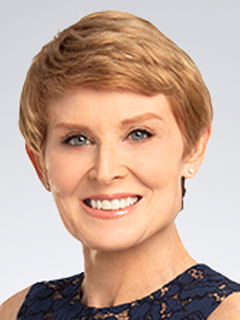Employment Gains Remain Robust
Labor market participation is picking up.

Payroll employment rose 311,000 after rising a revised 504,000 in January, surprising to the upside for a record-breaking 11th month in a row. That means 815,000 new paychecks in the first two months of the year, which is supporting a stunning level of consumer demand and inflation. Average hourly earnings cooled to 0.2% in February from 0.3% in January. Weekly earnings cooled to a 4% rate in February from a year ago but held close to the pace of the fourth quarter.
Public sector hiring added 46,000 after an upwardly revised 118,000 in January. Gains were concentrated at the local level. Public schools are finally staffing back up after suffering a prolonged period of staffing shortages following reopening.
Private sector hiring was driven by gains in leisure and hospitality, which accounted for more than a third of all employment gains. Food services drove those gains. Hotels and resorts are hiring up to restore services suspended during the pandemic.
The ranks of those who were out on vacation hit 1.6 million, the second highest February on record. Those figures are now overshadowing the ranks of those out sick and unable to work; that is a welcome shift in the pandemic, but worrisome for inflation in the service sector. Throughput at TSA checkpoints exceeded the 2019 levels during much of February.
Retail hiring remained strong with a gain of 50,000. Gains were concentrated in both traditional department stores and big-box discounters. One of the largest retailers in the country raised entry-level wages last month from $12 to $14 per hour. Those increases tend to ripple up the wage scale over time, as managers want to retain their pay margins over those they supervise.
There were some signs of labor hoarding in retail, which shed fewer workers than usual in February; that translated to a seasonally adjusting increase in employment for the month. The Federal Reserve’s Beige Book revealed that many firms were holding onto workers longer, even as demand waned.
Wages in the retail sector surged 1.1% in February, a sharp acceleration from January. The gains this month were concentrated in supervisory workers. Watch for gains in entry-level pay and the spillover effects of those gains as the boost to entry-level wages by the largest retailer spreads.
The resurgence in spending at traditional retailers in January was stunning: We saw the largest monthly gain in history, outside reopening. The record 8.7% bump in social security checks fueled those gains. Baby boomers tend to shop at traditional department stores more than other groups. This data suggests we could see another upside surprise in spending in that category in the February retail sales report.
Hiring in health care rose by 44,000, another solid month of gains, after suffering acute shortages. Almost half of those gains were in hospitals. The remainder was concentrated in nursing homes and long-term care facilities. Retirement communities with assisted living are staffing up via an influx of immigration.
Professional business services rose by 45,000. Wages in professional businesses services cooled to a 0.2% pace, after averaging between 0.3% and 0.5% monthly gains. That is the sector that drove the drop in the overall quit rate according to the Job Openings and Labor Turnover Survey (JOLTS) data in January. Advertised wages have slowed considerably, suggesting that the opportunities for job hoppers, at least In some sectors, are diminishing.
Construction posted a gain of 24,000, with employment concentrated in residential specialty contractors. That is a testimony to how tight the labor market for skilled carpenters remains, despite the deepening recession in housing. The JOLTS report shows that job openings in construction have begun to fall. That will likely show up as a loss in construction employment later this year. Much depends on how rapidly infrastructure projects ramp up.
Losses were experienced in manufacturing, transportation and warehousing and information. The latter includes tech, media and publishing, all of which have been hit by a recession in advertising and rate hikes by the Fed.
The unemployment rate rose to 3.6% for the right reasons, an increase in participation in the labor force. The gains were broad-based in all categories but white men. The participation rate of the over 65 crowd remains low and continues to account for the bulk of the shortfall in workers in the labor market relative to February 2020. Foreign-born workers surged 882,000, the highest monthly gain since 2007, when the series began. The participation rate of foreign-born workers is much higher than that of native-born workers and a major driver of the improvement in participation.
The participation rate of prime-age workers (25-54 year-olds) matched the peak of the last expansion of 83.1% in January 2020. Prime-age women continued to gain ground and are now only 0.1% below the peak hit in April of 2000. The increase in participation rates by men was driven by an increase in participation by men of color.
Multiple job holders fell slightly to 7.9 million in February from 8 million in January. Those with two full- time jobs hit a new record on a 12-month rolling average basis. That is nearly 20% above the previous peak during the height of the tech bubble in 2000; the pivot to work from home and incredible demand for workers are buoying those figures.
Bottom Line:
Employment gains remain robust, which will continue to fuel aggregate demand. The slowdown in wage growth will not sway the Fed away from a half percent move in March because it is not easing demand and could soon reverse. The larger concern is financial market volatility, which has intensified over the last week. Our bet is that the Fed moves forward to contain inflation.
The slowdown in wage growth will not sway the Fed away from a half percent move in March.
Explore more
Meet our team

Subscribe to insights from KPMG Economics
KPMG Economics distributes a wide selection of insight and analysis to help businesses make informed decisions.
